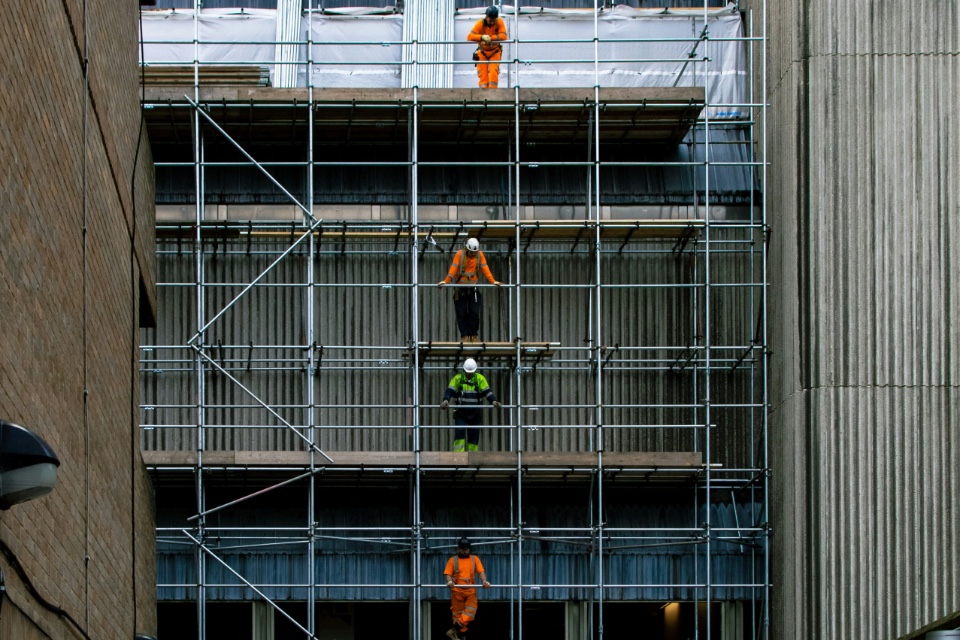AI is revolutionising most if not all work industries, and construction is no exception. Advanced technologies, including machine learning and computer vision, are being implemented into various facets of the sector to improve efficiency in areas such as planning, safety, quality control and overall productivity.
Although AI has the potential to revolutionise construction processes, what about areas of construction that remain beyond the reach of automation?
One long-existing challenge in the industry is a shortage of skilled human labour on job sites. With an ageing workforce and declining uptake of young people in construction-based roles, the UK sector, according to the CITB, is said to need an extra 250,000 workers over the next 4 years to meet the UK’s building output demand.
The following article from Watts discovers if the modernisation and diversification brought by AI, could help bridge this workforce gap in construction…
The current workforce gap
Although the construction industry holds many benefits such as diverse daily tasks, competitive pay, and options for progression, the industry has faced challenges when it comes to attracting and retaining a sufficient workforce.
As it stands, in the first quarter of 2024, 2.1 million people were employed in the the construction industry, however, according to industry body CITB, construction will need to see an extra 250,000 workers over the next 4 years to meet the UK’s output demand which is currently resulting in a decline in project starts, and contract awards across the country.
Construction has long struggled with an ageing workforce, with the average construction worker said to be around 50 years old. According to the 2021 census, 33% of workers were aged 35–45, 31% were 50–64, and only 9% were aged 16–24, demonstrating the decline we are seeing in young people entering the sector compared to previous years.
A lack of uptake
As part of a broader initiative, industry bodies have been advocating for years that one way to address a declining workforce is by attracting more young people into the construction sector.
Like many industries, as construction recovers from the COVID-19 pandemic, industry bodies have emphasised the importance of attracting a wide range of talent from early on including recent graduates, early-career professionals, career changers, and those newly entering the workforce.
However, to this day, apprenticeships – a primary entry point to the sector – remain low.
According to UCAS, in 2024, while over half a million students will enter full-time undergraduate programs, fewer than 5,000 young people will start apprenticeships at Level 4 and above. Meaning that apprenticeships will often be left to individual employers and organisations to manage, impacting sectors like construction that rely heavily on apprentices to sustain their workforce.
Across the UK, job vacancies in construction remain high, yet many working-age people struggle to find employment that fits their needs and aspirations. In response, there are efforts to reshape the way careers in construction are perceived and experienced by young people.
Changing perceptions
A major factor contributing to the low uptake in the construction sector, as reported by the CITB, is the stigma around construction careers. So much so that they are recognising the importance of changing perceptions, and prioritising messages that resonate with younger audiences when reaching them.
Although there is an interest in construction careers, young people are still reportedly viewing the majority of careers in construction as outdated, labour-intensive, and mostly male-dominated, meaning that the sector faces challenges in turning initial interest into action and attracting and retaining a sufficient workforce.
Considering that many young people are entering the workforce just as AI begins to transform it and traditional industries evolve, recent findings from a report conducted by Currys reveal that over 30% of student respondents stated that the emergence of AI influenced their chosen field of study, while 63% believe that AI has improved their chances of career success. When these findings are compared with the recruitment challenges facing the construction industry it becomes clear that integrating AI is essential for construction to attract top talent and be seen as a first-choice career path.
Evolving job roles
Given the vast potential of AI in construction, AI will not only change the way the industry is perceived, but how tasks are performed too. The 2023 World Economic Forum’s (WEF) Future of Jobs Report found that 23% of today’s jobs will change, and that 44% of workers’ core skills are expected to change from 2023-2027.
Construction roles will also adapt to technological developments. They will shift from being hands-on labour into supervisory roles, where, instead of performing traditional manual tasks, workers will focus on checking and validating AI-driven work and processes. These new roles will require a certain level of digital skill, creating future workforces that are capable of managing advanced technologies in real-world settings.
Envisioning the future
Like many other industries before it, as construction onboards more and more AI processes, the way the industry is perceived by young people will be challenged. The introduction of cutting-edge technologies will not only make it more appealing to tech-forward individuals, but offer more openings for AI-related fields in the construction industry.
As construction roles become more dynamic and technology-driven, the industry has the potential to attract a younger demographic interested in working on the front lines of innovation and digital transformation, helping to change the narrative from a more traditional career choice, to one that is evolving and adapting to our ever-changing world and societies.







